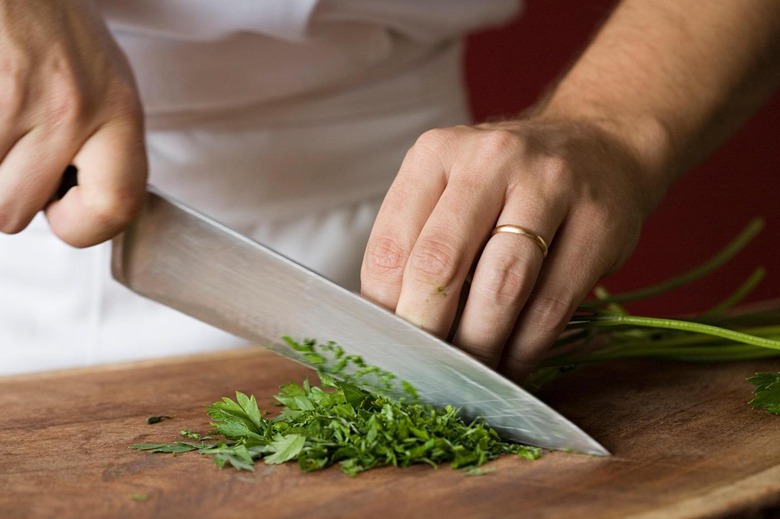When it comes to culinary arts, the choice of a knife can make or break your kitchen experience. For professional chefs and cooking enthusiasts alike, owning a set of high-quality German knives is often a dream. However, the high price tag associated with these premium tools can be a significant barrier. But what if you could find German knives under $100? Are they worth the investment? In this article, we dive into the world of affordable German knives, exploring their features, benefits, and potential drawbacks.

Understanding the Appeal of German Knives
German knives are renowned for their durability, sharpness, and exceptional craftsmanship. Brands like Wsthof and Zwilling have set the standard for what a kitchen knife should be. German knives are typically known for their weight, balance, and ability to retain sharp edges over time, making them a favorite among professional chefs.
One of the main reasons for their appeal is the meticulous process involved in their production. If you're curious about the history of German knife making, you'll find that it is steeped in tradition and precision, particularly in Solingen, known as the knife capital of the world. However, the high craftsmanship often translates to high costs, making budget-friendly options an attractive prospect.
Features of German Knives Under $100
While you may not get all the luxurious features of high-end models, German knives under $100 can still offer several appealing characteristics:
1. Quality Steel
Even at a lower price point, many affordable German knives are made from high-carbon stainless steel, which ensures durability and resistance to rust and corrosion.
2. Ergonomic Design
A comfortable grip is essential for prolonged use, and many budget-friendly options still manage to include ergonomically designed handles, often made of durable synthetic materials that mimic the feel of more expensive alternatives.
3. Versatility
German knives are known for their versatility, and this is no different in the budget range. A well-crafted German chef's knife can effortlessly handle a variety of kitchen tasks, from chopping vegetables to slicing meats.
Potential Drawbacks
While there are significant benefits to purchasing German knives under $100, there are also some potential drawbacks to consider:
1. Edge Retention
While high-carbon stainless steel is durable, lower-priced models may not retain their sharp edge as long as their more expensive counterparts. Regular maintenance and sharpening are crucial to maintaining their efficiency. You can read more about how to clean your Wusthof knives to ensure they last longer.
2. Limited Features
Budget knives may lack some of the refined features found in higher-end models, such as full tang construction or precision edge technology. However, these aspects may not be as critical for those who are not using the knives in a high-pressure, professional kitchen environment. For more insights, you might want to explore German knife edge geometry.
Choosing the Right German Knife
When selecting a German knife under $100, it's essential to consider your specific needs and how the knife will fit into your culinary routine. Are you looking for a versatile chef's knife, or do you need a specialized tool for butchering or bread slicing? Understanding your needs can help narrow down the options. Additionally, checking reviews and recommendations can provide insights into how the knife performs in real-world settings.
Recommended German Knives Under $100
There are several reputable brands and models that fall into this price range. For example, the Wsthof Pro Chef's Knife is a popular choice among professionals for its balance and durability. Similarly, the Zwilling Gourmet series offers affordable options without compromising too much on quality. For a more comprehensive list, you can explore the best German knife set under $211.
Maintaining Your German Knives
Like any kitchen tool, proper maintenance is key to ensuring longevity and performance. Regular sharpening and proper storage can extend the life of your knives significantly. It's also crucial to use the right cutting boards, as some materials can dull the blades more quickly. For guidance on choosing the right board, check out the best cutting board for German knives.
Conclusion
Investing in German knives under $100 can be a wise choice for those looking to enhance their kitchen toolkit without breaking the bank. While they may not offer all the premium features of their higher-priced counterparts, they can still provide excellent performance and durability. With the right care and maintenance, these knives can be a valuable addition to any kitchen. For professional chefs and home cooks alike, understanding the balance between cost and quality is crucial in making the right choice.

FAQ Section
Are German knives better than Japanese knives?
It depends on the user's preference and the tasks at hand. German knives are generally more robust and versatile, while Japanese knives are often lighter and sharper, suitable for precision tasks.
How often should I sharpen my German knife?
For professional chefs who use their knives daily, sharpening once every few weeks is recommended. For home cooks, once every two to three months should suffice.
Can German knives under $100 be used for professional cooking?
Yes, many budget-friendly German knives are suitable for professional settings, as long as they are maintained properly and used with the right techniques.


























